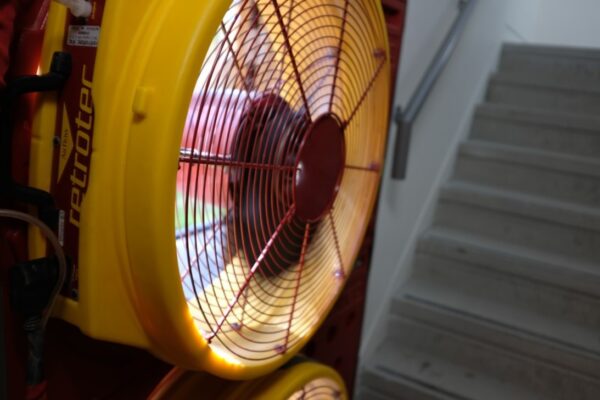If your building achieves poor air test results in excess of 10m3/hr/m2, don’t panic! We can undertake combined air tightness testing and smoke leakage surveys to identify the air leakage paths within your building envelope. On previous projects, we have encountered some buildings that initially achieved an air leakage figure in excess of 20m3/hr/m2; however, by using combined air tightness, smoke leakage testing and subsequent sealing works, we managed to lower the building air leakage below 5m3/hr/m2 and a much more respectable result.
It is common knowledge that excesses air leakage, is one of the main reasons for poor performing buildings, yet it can be quite difficult to pinpoint air leakage in both new and conversion projects. The beauty of combined air tightness and smoke leakage testing is it provides an accurate and visual approach to identifying and controlling air leakage in buildings. We also provide a comprehensive air leakage survey report at the end of the initial test. the report highlights the air leakage paths within the building fabric, which in turn allows for targeting sealing works by the sealing contractor.
What types of smoke machines do we use?
When it comes to smoke test surveys, we usually use 3 different types of smoke machines. We use smaller handheld smoke machine for standard houses. Our mid-size smoke machine for large houses, small commercial buildings, and smoke shafts etc. Finally, we have our large smoke machines that can fill a large commercial building in minutes.
So, to recap, we use the following types of smoke machines on our projects:
- Small handheld smoke machine – flats, houses and cleanrooms (10-300m2 floor area)
- Mid-size handheld smoke machine – large houses, small commercial buildings and smoke shafts (300-1000m2 floor area)
- Large smoke machine – large commercial buildings (1000+m2 floor area)
We always utilise smoke machines with blower door systems to accurately identify the air leakage paths in buildings. Without the inclusion of a blower door system to pressurise the entire building, you will only see small amounts of ‘wispy’ smoke drift around the building, which makes it very difficult to identify and record the exact air leakage areas through the building fabric.
We can help with your PAS2035 Air Tightness Test
You can rest assured that we provide the highest quality service for all your air tightness testing and reportage. We are a UKAS accredited laboratory, as well as being certified to ATTMA Level 2.
By working with our customers throughout their design and construction stages, we can provide advice and guidance on the most feasible ways to avoid air leakage and attain compliance for the air tightness test. Please download our air tightness checklist to help you prepare for your test.
If you would like more information in for our PAS 2035 air tightness testing services, please contact us at info@airpressuretesting.net or visit our call us on 01525 303905. Alternatively, please see a copy of our air leakage checklist to help you prepare for your PAS2035 Air Test.


